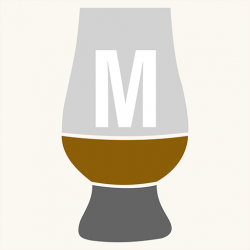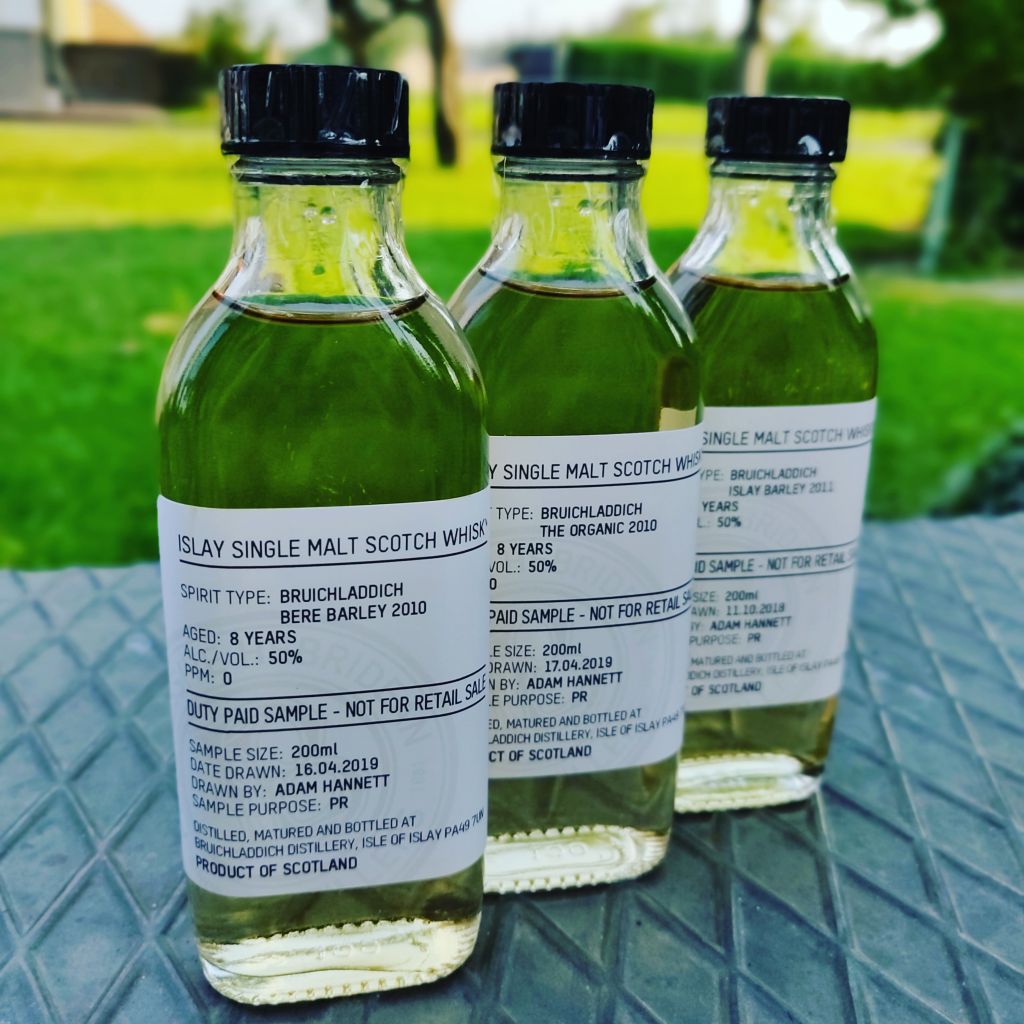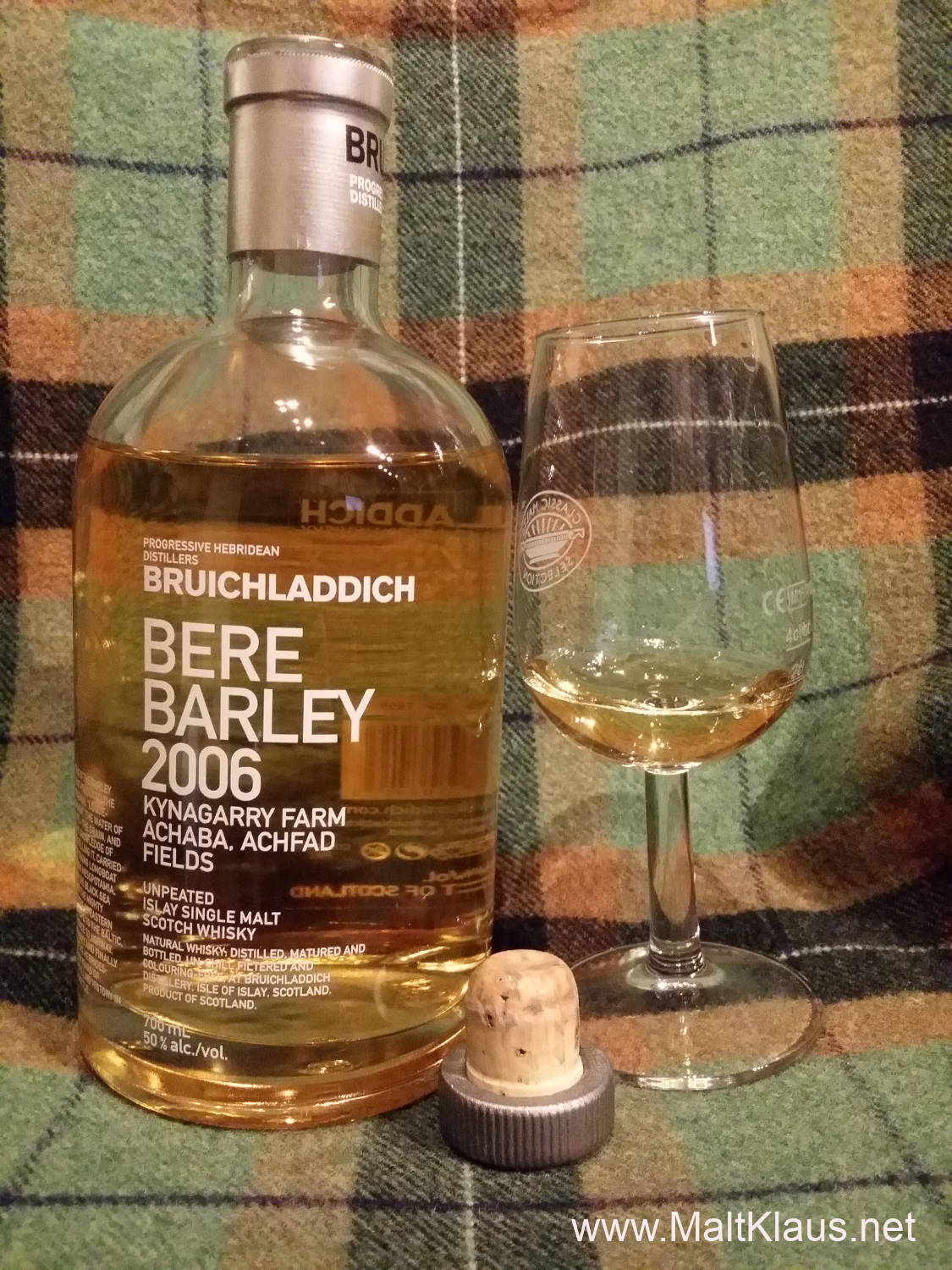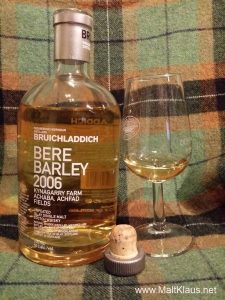Not one, not two, but three samples landed on my desk this week – and they share a common theme: “Barley exploration series” by Islay’s Bruichladdich distillery. This year they’ve bottled an organic whisky from 2010, produced with organic malt from Mid Coul farms in Inverness, an Islay barley release from 2011, grown by six different farms on the island, and, finally a Bere barley release distilled in 2010 from the ancient barley ancestor Bere, sourced from Orkney. All releases are bottled at a relatively young age, 7 or 8 years and were matured without fancy experimental casks in order to let the spirit shine. The cask makeup is not entirely the same, though, with the Organic and Bere release being fully ex-bourbon matured, while the Islay Barley does feature 25% ex-wine European oak casks, making a direct comparison of the barley influence between all three of them difficult.
It is extremely difficult to quantify the influence of “terroir” in whisky – in other words, the influence of the barley and its heritage. There are also the influences by malting, mashing, distilling, maturation, the casks used and the age of the whisky. While technically we don’t have an equal lineup where only the grain used is the differentiating factor, there is one of these three samples that stands out: Bere. It is drastically different as a grain, at one point it was responsible for breaking the distillery’s ancient mash tun – back when they used Bere grown on Islay. Bere is also different in one other aspect: Nose and taste. The influence on the spirit is remarkable, noticeably different from modern distilling barley varieties. This became apparent when I tasted an earlier release a while ago – will I be able to pick out the distinct Bere influence again? We shall see!
Continue reading “Three new laddies on the block: Bruichladdich Organic 2010, Islay Barley 2011 and Bere Barley 2010”




